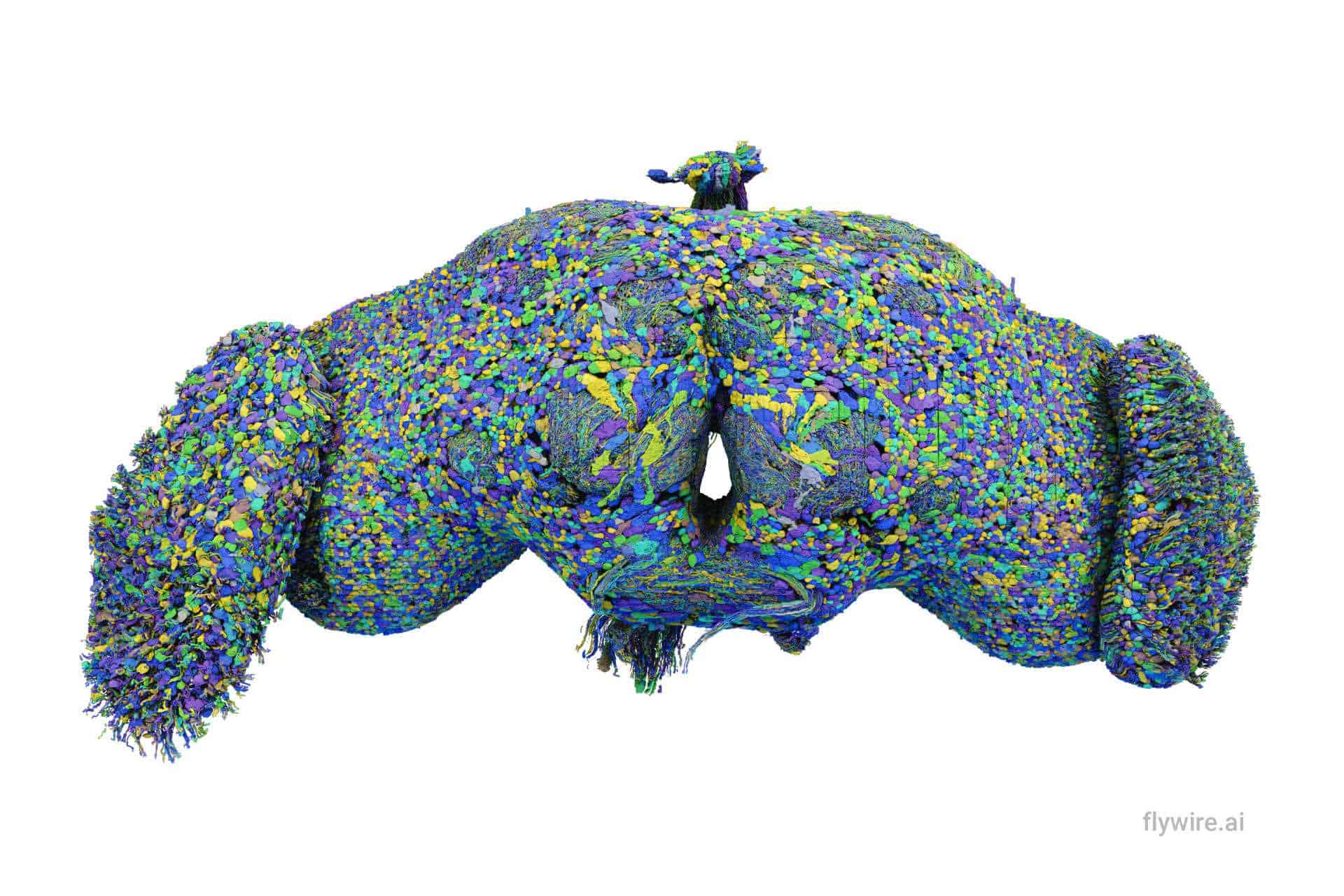
He brain It is a network of neurons interconnected. A team of scientists has mapped the 139,255 neurons and 54.5 million connections of the fly of the adult fruit, a kind of Google Maps for brains with great implications in the investigation neuroscientist.
“Many of you may wonder why we should be interested in brain of the fly of the fruit. My answer is simple: if we can really understand how any brainthat will tell us something about all brains,” Sebastian Seung, from Princeton University (USA), said in a virtual press conference.
Today the magazine Nature publishes nine articles in which the wiring map of the brain (connectome) of a female of the fly of fruit (Drosophila melanogaster) and how the connectivity of neurons specific drives behaviors such as communication between brain regions or movement.
Although he brain of this insect is less complex than that of a human being, the circuits neural of all the species They process information in a very similar way.
This work offers the opportunity to study the functioning of the brain in more detail than was possible and paves the way for mapping those of other species like the mouse, a project already underway.
Google Maps for brains
A second study, captained by the University of Cambridge (United Kingdom) offers an annotation of the classes neural and functional groups, identifying a total of 8,400 cell types, of which 4,581 were new.
Furthermore, it was possible to predict the neurotransmitter that secretes each neuron and if your connections with others (synapse) are excitatory or inhibitory, that is, whether they promote or reduce the probability of the continuation of an electrical signal, explained Gregory Jefferis of Cambridge.
The researcher compared the works presented with a “Google Mapsbut for brains. The wiring diagram between neurons It’s like knowing what structures of satellite images of the Earth correspond to streets, buildings and rivers.

Write down the neuronscould be compared -he said- “with giving names to streets and cities, the opening hours of shops, telephone numbers (…) the base map and those annotations are needed for it to be really useful for scientists” , who can now navigate the brain while they try to understand it.
Until now there was no connectome completeness of an adult animal of this complexity and one of the main questions addressed with it is “how does the wiring of the braintheir neurons and connectionscan lead to behavior animal,” said Mala Murthy of Princeton.
The eldest connectome of the fly of the fruit was from a cerebral hemisphere, with about 20,000 neurons and 14 million synapsethe larva of this animal is also known (3,016 neurons) and that of a nematode worm (302 neurons).
Why a fly?
The flies of fruit are an important model for neurosciencesince their brains solve many of the same problems we do and are capable of sophisticated behaviors such as Flight, learning and memory behaviors, and social interactions, Murthy explained.
Furthermore, this insect shares 60% of human DNA, and three out of four of our genetic diseases have a parallel in those fliesthat’s why understanding your brain It is one more step towards understanding the brain of species more complex.
For the moment, think of a connectome complete human being is something out of the possible, our brain It has about 86,000 million neurons and billions of connections. In data alone it would be one zettabyte, which is approximately the total traffic on the internet for a year.
But it accomplished now serves as a precursor to new progress from the Brain Initiative, which wants to make these same maps in mammals, starting with the mouse.
“We know very little about the circuits of the brain human enough to be able to devise cures and prevention measures (…), in short we cannot fix what we do not know and that is why we believe that this is such an important moment for neuroscience“, according to John Ngai of the Brain Initiative.
Jefferis predicted that, “hopefully,” in the next five to ten years there will not only be a brain of complete mouse, but several for begin to compare how lived experiences can bring changes.
AI and open science
The scientist pointed out that “if we put the best minds to work together the sky is the limit.” This is what did the FlyWire Consortium, which has coordinated the work and brings together almost 300 researchers.
The researchers opened the map to the scientific community from the beginning. neural that they were developing and other groups have already begun to try to simulate how the brain of the fly to the outside world.
Along with them the use of intelligence artificial intelligence (AI) without which it would have been impossible to reconstruct the wiring neural. “It is an example of how AI can advance the neuroscience“, in the words of Princeton’s Seung.
But since the programs are not infallible, a computer system of tools was created that allowed a large community of researchers online examine the segments, correct their accuracy and annotate cell types and classes in a manner.
The map was built from 21 million images taken from the brain of one flywhich measures less than a millimeter wide, in total more than one hundred terabytes of image data or, in other words, the storage of one hundred normal laptop computers.



